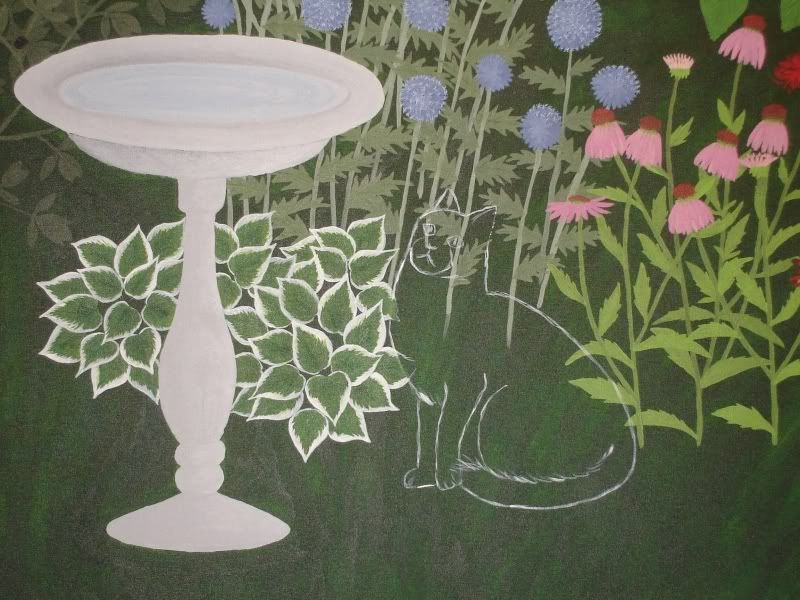I am a recycling queen. When I was growing up, I would have been called a scrounge. But now recycling is fashionable, or at least the pretense of it. Some people think that recycling is washing out your old bottles and containers, and setting them out in the blue box, or setting out your old newspapers. It's much more than that. It's a lifestyle. An attitude.
I don't just "recycle", I reuse. Or at least I accumulate lots of stuff which one day could come in handy... Glass jars with screwtop lids for canning. Jars without resealable lids as give-away vases for garden flowers. Plastic takeout containers for storing leftovers or keeping cookies in the freezer. It is not so clear what uses to put to other plastic containers and lids or metal soup cans, but it doesn't stop me from stockpiling them also. Toilet paper rolls for future crafts. Campbell's labels for future church or school fundraising drives (I occasionally find someone to pass my accumulations to). I even started collecting the twist caps from milk jugs (see photo right - once I get the photo upload working!!). They are so colourful, there must be some craft (plastic quilt, anyone? milk cap necklace?) which would use those (suggestions welcome, please).
The same holds true for extra plants. There is always some home for them (and I don't just mean the compost pile!). I am proud to be part of a group of gardeners who swap our extra plants every Spring and Fall. It is a win-win-win situation for all.
For the plant donors:
- guilt-free cleanup of the garden
- share your favourite and very successful plants
- meet other gardeners, make like-minded friends
For the plant recipients:
- HUGE savings over buying from the local garden shop!!
- plants which are proven to grow in our weather conditions (not just in a fancy catalog)
- some of the donors are serious plant collectors, so the plants may be rare treasures (not like mine, which are often the same aggressive and near-invasive plants which I originally received from the group!)
For the plants:
- new home, new conditions - it sure beats the compost pile!!
This year, I managed to give away 20 seedlings from my too-successful Carex Pendula grass. I did warn everyone I gave it to, that this one grows to a large size. When I received it (from a previous Swap) it fit in the palm of my hand. Two years later (I have very rich soil) it has formed a solid clump a good 3 feet across, about 2' tall, with the long, pendulus seedheads rising about 5' high and reaching out in every direction.
I have been wondering what to do, since the grass is starting to bully the coral maple next to it (see photo right - once I get the photo upload working!!). I asked Karin, an experienced gardener in our group, and she told me that she had finally removed hers from her garden, it demanded too much space, and she had to make room for other favourites. Her quiet wisdom inspired me to take the shovel to my clump this afternoon. Or at least I tried... and tried... and tried... Without chopping that clump into pieces (which would be quite a feat in itself), I don't think I have the strength to budge that monster.
Hopefully, I do have a solution. I asked the landscaper of my next door neighbour (they are just finishing their landscaping, and could use a strong plant like this monster grass, to retain the edge of their yard - the back half of their lot is a very steep ravine). Thankfully, he seems to have agreed. He will also take the remaining butterfly bushes which I propagated.
I started with one butterfly bush, which may be the common purple type, or at least it is a very vigourous growing variety. In the Spring, I pruned it hard, and stuck the 2' trimmings in the ground. Nearly all of them took, and I ended up with about a dozen small bushes this summer, all of which bloomed also. I have found homes for all of them. I don't know if I'll repeat the exercise again, next year. I think I'm running out of homes which will accept them. I have acquired, however, 3 more uncommon varieties (from my trading group), which I will be very happy to propagate, once they take off.
If you don't have any organized trading group in your area, make friends with neighbourhood gardeners. Most gardeners are happy to give away their garden extras, and a lot of good advice while they're at it. Share your duplicate plants, too. It is not only rewarding, but good insurance, too, in case of unforeseen loss.




